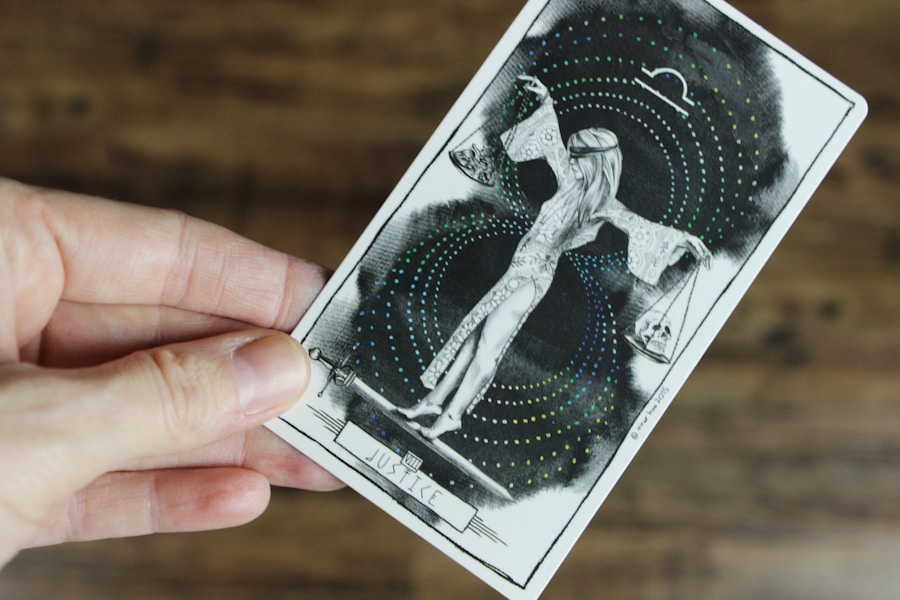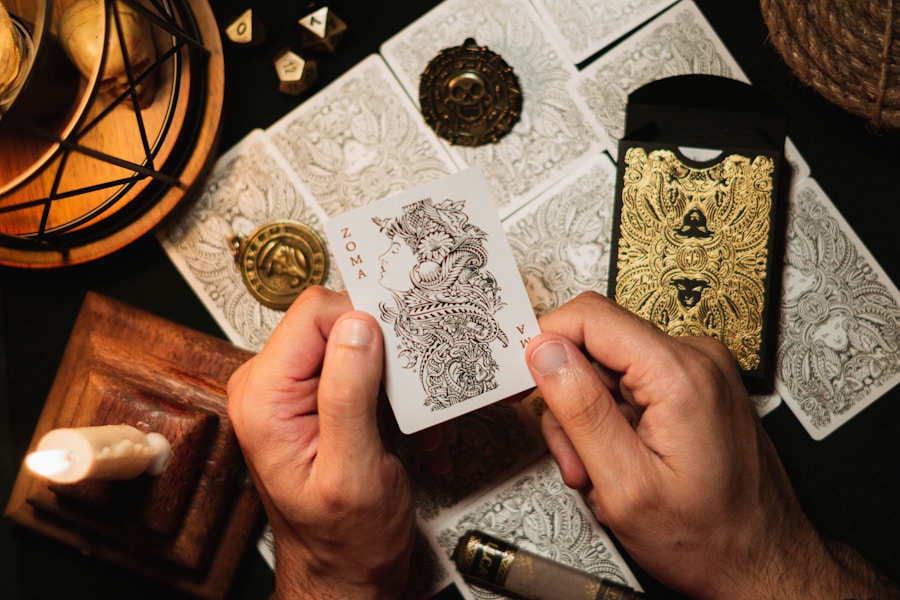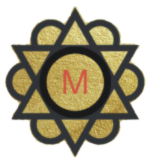
Tarot cards and astrology are two distinct yet interconnected systems that have captivated human interest for centuries. Tarot, a deck of 78 cards, serves as a tool for divination, self-reflection, and personal growth. Each card carries its own symbolism, imagery, and meaning, which can be interpreted in various ways depending on the context of the reading.
The Major Arcana, consisting of 22 cards, represents significant life themes and spiritual lessons, while the Minor Arcana, made up of 56 cards, delves into everyday experiences and challenges. The interplay of these cards can reveal insights into one’s past, present, and future, offering guidance and clarity. Astrology, on the other hand, is the study of celestial bodies and their influence on human affairs.
The astrological chart, or natal chart, is a map of the sky at the moment of birth, detailing the positions of the sun, moon, and planets across the twelve zodiac signs and houses. Each sign embodies specific characteristics and energies, while the houses represent different areas of life.
Together, they create a complex tapestry that can provide profound insights into an individual’s life path.
Key Takeaways
- Tarot cards are a tool for divination and self-reflection, while astrology is the study of the positions and movements of celestial bodies.
- Tarot cards are believed to have originated in the 15th century in Europe, while astrology has been practiced for thousands of years in various cultures.
- Tarot cards and astrology intersect in their use of symbolism, archetypes, and the interpretation of cosmic influences on human life.
- Tarot cards can be used to enhance astrological readings by providing additional insights and perspectives on a person’s life and future.
- Astrology plays a role in tarot card readings by providing a framework for understanding the cosmic influences at play in a person’s life.
The History and Origins of Tarot Cards and Astrology
The origins of tarot cards can be traced back to the 15th century in Europe, where they were initially used as playing cards. The earliest known tarot decks were created in Italy and were called “tarocchi.” These decks were not originally intended for divination; rather, they served as a form of entertainment among the nobility. It wasn’t until the late 18th century that tarot began to be associated with mysticism and esoteric practices.
Figures like Antoine Court de Gébelin and Eliphas Lévi popularized the idea that tarot cards held ancient wisdom and could be used for divination. Astrology has an even older history, with roots extending back to ancient Babylon around 2000 BCE. The Babylonians developed one of the first astrological systems by observing celestial movements and correlating them with earthly events.
This practice spread to ancient Greece, where philosophers like Ptolemy further refined astrological concepts. The Greeks introduced the idea of zodiac signs and houses, which became foundational elements in Western astrology. Over centuries, astrology evolved through various cultures, including Indian (Vedic) astrology and Chinese astrology, each contributing unique perspectives and methodologies.
How Tarot Cards and Astrology Intersect

The intersection of tarot cards and astrology lies in their shared goal of providing insight into human experience and behavior. Both systems rely on symbols and archetypes to convey deeper meanings about life’s complexities. For instance, many tarot cards correspond to specific astrological signs or planetary influences.
The Emperor card in tarot is often associated with Aries and embodies qualities such as authority and structure, while The High Priestess corresponds to the Moon, representing intuition and mystery.
When a tarot reader understands a client’s astrological chart, they can tailor their interpretations to align with the client’s inherent traits and life circumstances.
For example, if a client has a strong emphasis on water signs (Cancer, Scorpio, Pisces), a reader might focus on tarot cards that resonate with emotional depth and intuition during the reading. This synergy allows for a more nuanced understanding of the messages conveyed through both systems.
Using Tarot Cards to Enhance Astrological Readings
Integrating tarot cards into astrological readings can significantly enhance the depth and clarity of insights provided to clients. One effective method is to use tarot cards to explore specific questions or themes that arise from an astrological chart. For instance, if a client is experiencing challenges in their career as indicated by their Saturn placement, a reader might draw tarot cards to gain further insight into the underlying issues or potential solutions.
Another approach is to use tarot cards to reflect on transits or progressions in a client’s astrological chart. For example, if a significant planetary transit is occurring in a client’s seventh house of relationships, drawing tarot cards can help illuminate how this transit may manifest in their personal life. The combination of astrological timing with tarot’s symbolic imagery can provide clients with actionable guidance tailored to their current circumstances.
The Role of Astrology in Tarot Card Readings
Astrology plays a crucial role in enriching tarot card readings by providing context and depth to the interpretations of individual cards. Each card can be viewed through an astrological lens, allowing readers to draw connections between the energies represented in both systems. For example, when interpreting The Lovers card in a reading, an astrologer might consider its association with Gemini—a sign known for duality and communication—thus emphasizing themes of choice and partnership.
Additionally, understanding planetary influences can help readers gauge the timing of events or decisions highlighted in a tarot reading. If a client draws The Wheel of Fortune card during a reading while experiencing a Jupiter transit in their natal chart, it may suggest that they are entering a period of expansion and opportunity. This astrological context can empower clients to embrace changes with confidence and optimism.
Tips for Integrating Tarot Cards and Astrology in Your Practice

To effectively integrate tarot cards and astrology into your practice, it is essential to develop a solid foundation in both disciplines. Start by familiarizing yourself with the meanings of each tarot card as well as their corresponding astrological associations. Creating a reference guide that outlines these connections can serve as a valuable resource during readings.
Another useful tip is to practice combining both systems through mock readings or journaling exercises. For instance, you might select a tarot card each day and reflect on its astrological significance in your life at that moment. This practice not only deepens your understanding but also enhances your intuitive abilities when interpreting readings for others.
Engaging with community resources such as workshops or online forums can also provide insights into how other practitioners blend these two modalities. Sharing experiences and techniques with fellow enthusiasts can inspire new approaches and deepen your understanding of both tarot and astrology. Lastly, always remain open to intuition during readings.
While knowledge of tarot meanings and astrological principles is essential, allowing your intuition to guide you can lead to profound insights that resonate deeply with clients. By harmonizing your understanding of both systems with your intuitive abilities, you can create transformative experiences for those seeking guidance through tarot and astrology.
Tarot Cards and Astrology often work hand in hand to provide guidance and insight into our lives. In a related article on numerology, Numerology: Exploring the Meaning of a 6 Birthday and Life Path, we delve into the significance of numbers and how they can influence our personalities and life paths. Just like Tarot Cards and Astrology, numerology offers a unique perspective on our individual journeys and can help us navigate through life’s challenges and opportunities.
FAQs
What are tarot cards?
Tarot cards are a deck of 78 cards that are used for divination, self-reflection, and guidance. Each card has its own imagery and symbolism, and can be interpreted in various ways depending on the reader and the question being asked.
What is astrology?
Astrology is the study of the movements and positions of celestial bodies, such as the sun, moon, planets, and stars, and their influence on human affairs and natural events. It is often used to create horoscopes and to gain insight into personality traits and future events.
How do tarot cards and astrology work together?
Tarot cards and astrology can work together by providing complementary insights and guidance. For example, a tarot reading may be influenced by the astrological sign of the querent, or the positions of the planets at the time of the reading. Astrological knowledge can also help tarot readers understand the broader context of a reading and provide additional layers of interpretation.
Can tarot cards be used to interpret astrological charts?
Yes, tarot cards can be used to interpret astrological charts by providing additional insights and guidance. Some tarot readers may use specific tarot spreads or techniques that are designed to work in conjunction with astrological information, helping to deepen the understanding of the chart and provide more nuanced interpretations.
Are tarot cards and astrology considered to be forms of fortune-telling?
Both tarot cards and astrology can be used for fortune-telling, but they are also used for self-reflection, personal growth, and spiritual guidance. Many practitioners view them as tools for gaining insight and understanding, rather than simply predicting the future.






